Turmeric is a popular spice used in many cuisines around the world.
It comes from the root of the Curcuma longa plant and has a distinct yellow color when ground.
Turmeric is popularly known for its abundance of antioxidants, anti-inflammatory properties, and even nutrition benefits.
But what does it taste like? Turmeric has an earthy, slightly bitter flavor, with notes of mustard and ginger.
Its texture is often described as “harsh” and “gritty,” but still with a certain sweetness.
When cooking with turmeric, you may find that the flavor changes depending on where it’s sourced from and how much time it spends cooking in dishes like curry or soup.
However, along with its unique taste profile comes a unique vibrant color that can become muted if cooked too long—so be sure to add turmeric at just the right time for maximum flavor, aroma, and color.
What is Turmeric?
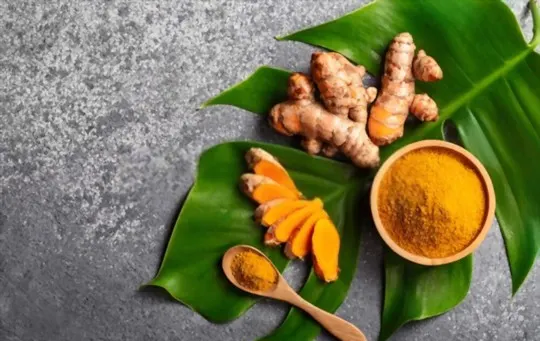
Turmeric is a spice that comes from the Curcuma longa plant and has a warm, bitter taste.
It is mainly used for coloring and flavoring curries, but also has many medicinal properties, including being an anti-inflammatory, antifungal, antioxidant, and antibacterial.
Turmeric is native to south India and southeast Asia and has been used in Ayurvedic medicine for centuries.
Turmeric is available both as a dried root powder or in its fresh form.
The powder form — which what’s most typically sold — has an earthy flavor with notes of ginger and pepper.
When heated in oil or ghee it will also take on an aromatic, slightly pungent aroma.
The fresh version of turmeric tastes much milder than the powdered form but still retains its vibrant yellow color.
What Does Turmeric Taste Like?
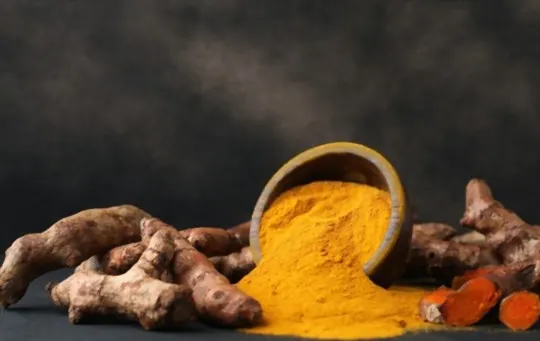
Turmeric is a bright orange-yellow spice derived from the rhizome of the ginger family plant that has been cultivated for thousands of years.
It has an earthy and warm flavor, as well as musky and bitter notes, making it a great addition to many dishes for its distinct taste.
Turmeric can be used in a variety of dishes like curries, sauces, soups, and vegetables.
It also works especially well in pickling spices to give them an extra zing.
Although some people enjoy eating plain turmeric powder or using it as a tea, most commonly use it for its culinary purposes.
Factors that Affect the Taste of Turmeric
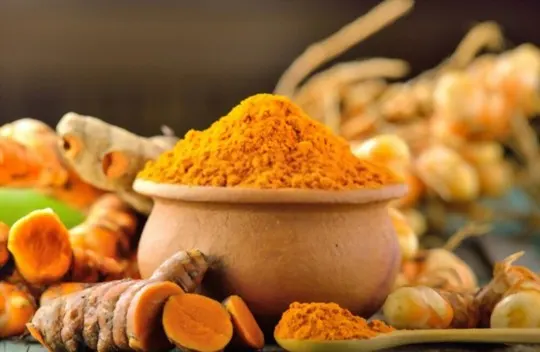
The taste of turmeric can vary based on a variety of factors.
How it is prepared and the part of the plant used can make a big difference in its flavor.
Other factors, such as how old the spice is, how difficult it is to extract its essential oil, and whether or not other spices are added can all impact the taste.
When it comes to processing, turmeric must go through several stages before it reaches the consumer.
It is harvested from the plant as a root and then dried before being processed into a fine powder.
Often times in traditional households, they take an extra step by boiling fresh turmeric root with salt and water before drying it out in order to soften up its inner core and provide an added layer of flavor.
The taste of turmeric typically falls between bitter and aromatic with earthy undertones when consumed alone for culinary use.
Freshly ground turmeric tends to have more pungent aromas than pre-ground varieties found in cupboards.
Turmeric has also been known to possess slight heat due to ginger-like spicy notes present near its base and mid-range levels of sweetness that come and go with each tasting experience.
When mixed with other spices or blended in sauces or curries, its flavor becomes muted while still adding complexity to dishes without overpowering them entirely.
1 – Varietal Differences
Varietal differences within turmeric exist and they can have a major impact on flavor.
Turmeric is sold in both dried powder form and fresh root form – and even within those forms, there are different types.
Dried turmeric powder is typically ground from mature turmeric root and will have a strong, earthy taste with a hint of peppery warmth that increases as you consume more.
The fresh root versions tend to have a slightly milder flavor than the dried powders, with scents that are analogous to ginger or citrus peel.
Indian grocery stores sell several types of turmeric root (curcuma longa), which vary in flavor intensity.
When purchasing fresh turmeric root, it’s essential to check that the color is still vibrant – areas which are beginning to dry out will be much less fragrant.
Generally speaking, if you purchase quality product, it should immediately give off its spice aroma, prompting you to take another sniff.
2 – Growing Conditions
Turmeric is grown in tropical regions where there is an abundance of sun and moisture.
Depending on the variety, the plants may be grown in fields or gardens, harvested at various stages of maturity, and processed for cooking.
The turmeric root contains compounds called curcuminoids which give turmeric its characteristic yellow color, as well as its distinctive flavor.
Turmeric is widely used as a spice and seasoning agent all over the world, giving dishes a unique zest without overpowering them.
In India, where it has been cultivated for centuries, turmeric is added to countless dishes ranging from curries to snacks like paapads and chana chaat.
In Southeast Asian cooking, it’s a major flavor component in various pastes such as thai curry paste.
Elsewhere on the globe, turmeric finds its way into popular dishes like hummus, biryani and even beverages like golden milk.
The taste of fresh turmeric can vary slightly from cultivar to cultivar but is generally described as earthy or bitter with a hint of citrus zestiness that leaves you wanting more.
It also has unique peppery qualities similar to ginger but with a complexity that sets it apart as its own flavor profile entirely.
Freshly harvested young turmeric roots are milder in flavor than mature turmeric roots due to their higher moisture content but generally share similar taste notes when taken into account.
When dried and ground into powder form however, the flavor becomes pungent and potent; this needs to be balanced out with other spices when cooking with it in order to bring out the fuller flavors without overpowering them completely.
3 – Processing Methods
The processing methods used to produce turmeric can also affect its flavor.
Turmeric can be boiled, fried, or steamed before it’s dried and ground into a powder.
Boiled turmeric is generally considered the spiciest and has a distinct almost-grassy flavor.
It is often used in Indian cuisines like curries and tandoori dishes.
Fried turmeric has a mellower flavor than boiled but still carries the peppery notes characteristic of turmeric root.
This preparation method is widely used in Middle Eastern recipes, such as biryani or hummus.
Lastly, steamed turmeric typically has a much milder taste than either boiled or fried versions, as the intense spices are subdued by the steaming process.
It works well in Asian recipes that call for a less spicy flavour profile like stir-fries or noodle dishes.
How is Turmeric Used in Cooking and Beverages?
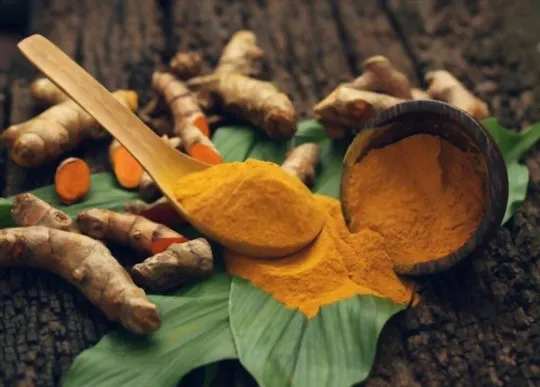
Turmeric is a popular spice used in cooking and beverages, providing a variety of benefits, such as anti-inflammatory properties.
Its flavor is earthy, warm, and slightly bitter.
It is best known for its bright yellow hue and its essential role in curries and other dishes from India and the Middle East.
Most people recognize it for its appearance in dishes like yellow rice, curries, and chai tea – but it also complements red meats or seafood as well as sweet fruits & vegetables like carrots & mangoes.
Turmeric can also be added to juices or smoothies to give them an energizing boost.
When cooking with turmeric powder or paste, it’s important to remember that it naturally has a slight sour note which will be more pronounced when added first to hot oil before other ingredients are added.
Pre-ground turmeric can lose some of its flavor faster than the fresh root itself so buy root when possible.
Additionally, a proportionally small amount of turmeric (1/4 teaspoon per pound) goes a long way — too much can overpower recipes.
In terms of beverages turmeric is best enjoyed when combined with other spices that help bring out its unique flavors such as ginger, cinnamon & cardamom.
Adding it to your morning coffee can be an energizing way to start your day – plus have the health benefits.
It also goes wonderfully when blended into smoothies for an extra immune-boosting boost before your day begins.
Turmeric lattes are becoming increasingly popular due to their delicious flavor profile & abundance of health benefits from the ancient ingredient.
Health Benefits and Uses of Turmeric
Turmeric has been used as a medicinal herb for thousands of years in India and other countries in Asia.
It has anti-inflammatory, antioxidant, and antiviral properties that make it attractive for those seeking natural remedies for many common ailments.
It can also be used to flavor and add color to food, making it a staple ingredient in Indian cuisine.
But what does turmeric taste like?
Turmeric has a pungent, slightly bitter taste that can range from mildly sweet to some with stronger notes of pepper and ginger.
The flavor is more pronounced when the root is fresh as opposed to ground turmeric powder.
It’s commonly used in curries, soups, stews, marinades and other savory dishes that require intense flavor.
While turmeric pairs well with sweet ingredients like honey or cinnamon, it contrasts nicely with earthy flavors like cumin and garlic as well.
In addition to its flavorful qualities, turmeric also has many health benefits.
Research shows that turmeric may help reduce inflammation associated with arthritis and skin conditions such as eczema and acne; improve blood circulation; support cardiovascular health; ease stress; boost immunity; aid digestion; enhance cognitive function; lower cholesterol levels; reduce risk of cancer development; improve liver function; prevent vision loss due to age-related macular degeneration (AMD); lower blood sugar levels; soothe anxiety disorders such as depression and OCD symptoms; relieve menstrual discomforts including abdominal pain or cramps during menstruation (dysmenorrhea); provide relief for stomach ulcers caused by bacteria or virus infection (Helicobacter pylori) among many other potential therapeutic uses.
Whether you’re using turmeric for its flavor or health benefits, there are multiple ways you can incorporate this natural powerhouse into your diet.
From golden lattes made with almond milk to curry-spiced dishes loaded with bell peppers and cauliflower – only your imagination limits how far you go.
Where to Buy Turmeric and How to Store It
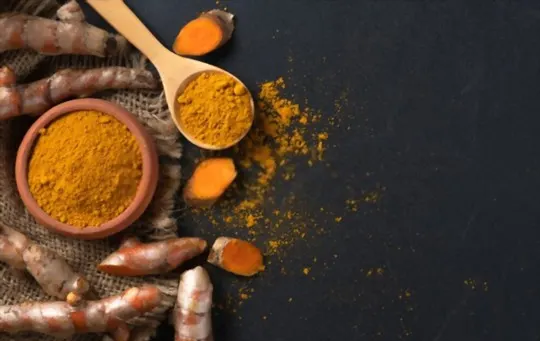
When buying turmeric, it is important to consider freshness, as the flavor will diminish if the turmeric is past its prime.
Fresh turmeric root can be purchased at health food stores and online; however, the most common preparation is in powder form.
The powder is made by drying and then grinding the fresh root.
While it’s convenient to always keep some of this pre-ground powder on hand, fresh turmeric root will offer a stronger flavor and more vibrant color.
The entire root has a pleasant earthy smell and it can also be used in juices or grated into prepared dishes before serving.
Storing turmeric in its powdered form is simple — simply put it an airtight container away from heat and light.
For optimal results, storing it in a cool, dark place (like a pantry or cabinet) is best; however, if using freshly grated or ground up root, store any excess for no more than three days in an airtight container in the refrigerator to maintain optimal taste and quality.
If using frozen chunks of root, thaw them for 10 minutes before grating for better uniformity.
Conclusion
Ultimately, the taste of turmeric can vary greatly.
It has a complex flavor – slightly bitter and with earthy undertones.
The best approach is to start small and increase the quantity in dishes gradually until you reach a preferred level of seasoning.
You can also try experimenting with different herbs and spices to find ideal pairings for your specific tastes.
If you’re looking to fully embrace the flavors of turmeric, try adding it in soups, curries and even smoothies for a further depth of flavor.
Keep in mind that too much can be overpowering, but with careful experimentation, you can find just the right amount to make your dishes really stand out.
Most importantly, enjoy discovering its unique flavor.

What Does Turmeric Taste Like? A Comprehensive Guide
Ingredients
- Turmeric
- Ingredients from your selected recipes
Instructions
- Select your favorite ingredient from the range available in this article.
- Collect all the necessary items to make the recipe.
- Use the instructions provided to prepare a delicious dish in 30 minutes or less.

Carrie is a food writer and editor with more than 15 years of experience. She has worked for some of the biggest names in the food industry, including Bon Appétit, Food & Wine, and Martha Stewart Living.
As the Editor in Chief of IntroChicago.com, Carrie oversees all of the content on the site. She also manages the team of contributing writers and editors, who help to create delicious recipes, helpful tips, and informative articles that you’ll find on the site.
A native of the Chicago area, Carrie is passionate about all things food. She loves trying new restaurants and experimenting with new recipes in her kitchen. She’s also a graduate of the Culinary Institute of America, so she knows a thing or two about food!
